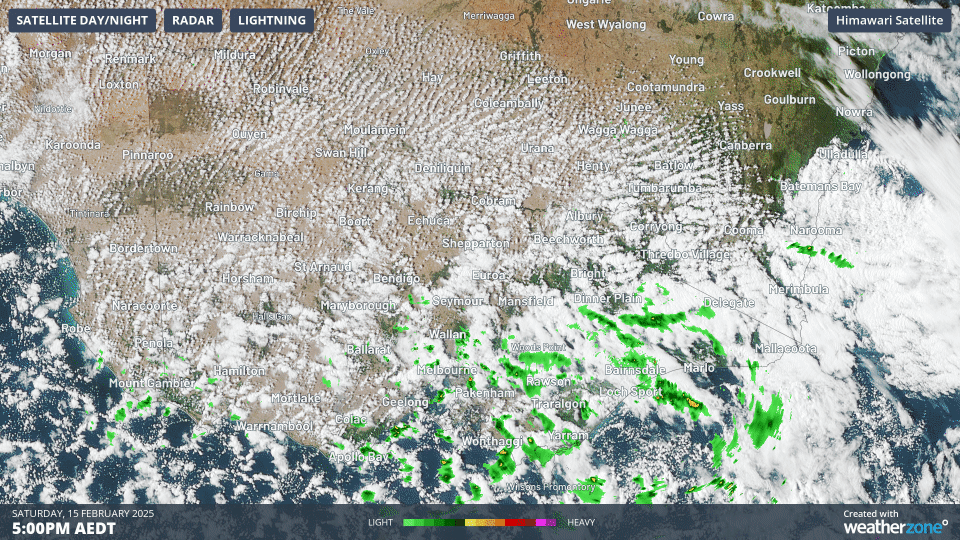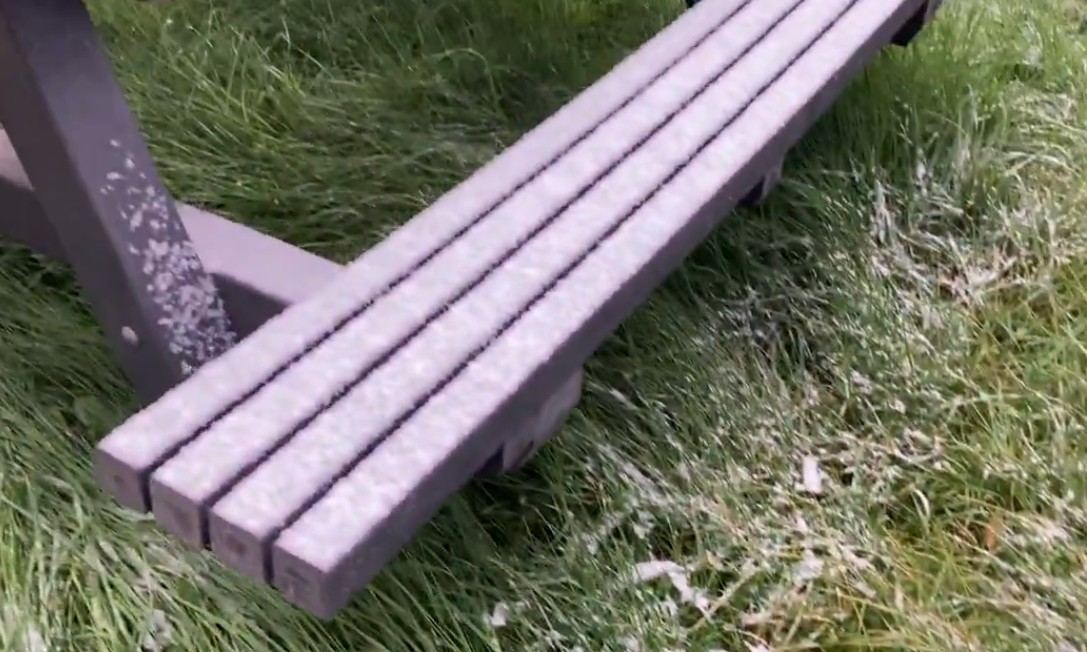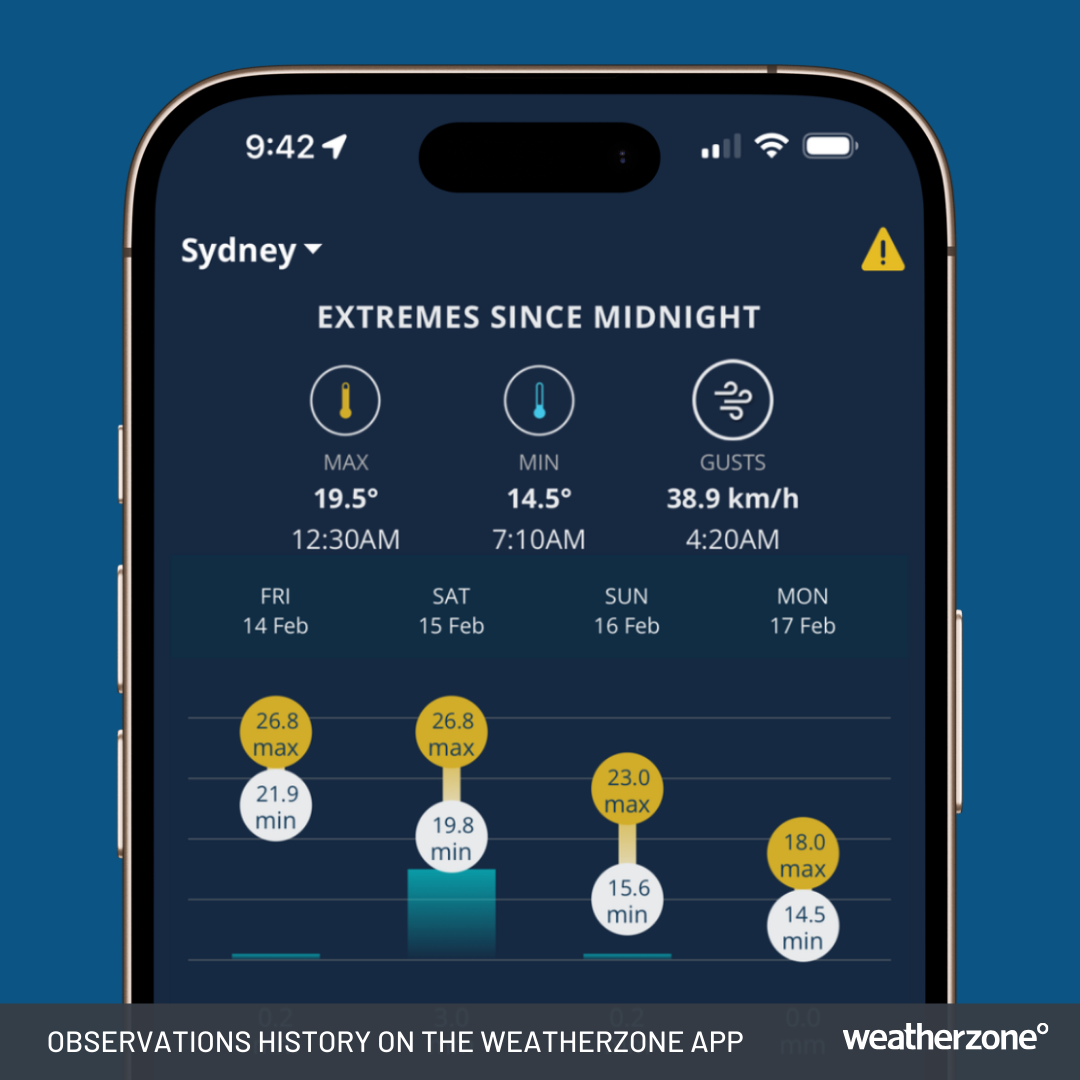Summer snow and near-record lows
Even in a warming climate, summer polar outbreaks are still possible in Tasmania and the southeast of mainland Australia, and we saw a significant one on the weekend.
Snow settled on the ground in elevated parts of Tasmania as well as the high country of NSW and Victoria as a strong cold front surged through the region on Saturday.

Image: Three-hour combined satellite and radar loop showing the tell-tale speckled cloud and showers as the cold front surged through Victoria late on Saturday.
By Monday morning, subzero temperatures had been recorded in Tas, Vic, NSW and the ACT, including:
- –4.2°C at Thredbo, NSW (Sunday morning)
- –3.7°C at Mount Hotham, Vic (Sunday morning)
- –3.1°C at Mt Ginini, ACT (Sunday morning)
- –3.0°C at Liawenee, Tas (Monday morning)
But this was not just a system which affected alpine regions. The whole of southeastern Australia experienced a strong unseasonable chill as well as a drop in humidity which made the cool dry air feel all the more brisk.
- Melbourne shivered through its coldest morning this early in the year for 37 years, when the mercury dropped to 9.9°C on Sunday morning.
- Monday morning was Sydney's coolest February temperature in 12 years, and while the low of 14.5°C doesn’t seem particularly cold, bear in mind that the running average minimum for February 2025 to date was 20.5°C before today.
- Canberra dipped to 3.1°C on Sunday morning and 4.2°C on Monday morning – the first time the mercury had plummeted to single digits this February.
Image: Observations History on the Weatherzone app for Sydney, NSW, as at 9:42am AEDT on Monday, February 17, 2025.
The cool air from systems like these generally takes a few days to dissipate, and mild temperatures will prevail in the southeast for much of the working week before heat returns towards the weekend.
For example, Melbourne is expecting highs of 21°C, 22°C, 20°C and 23°C from Monday to Thursday repectively before the mercury soars into the mid-30s by Sunday.

Image: A picnic table at Dinner Plain, Victoria. You can tell that this was snow (not hail) because of the way the snow settled on the grass and the diagonal support of the table.
